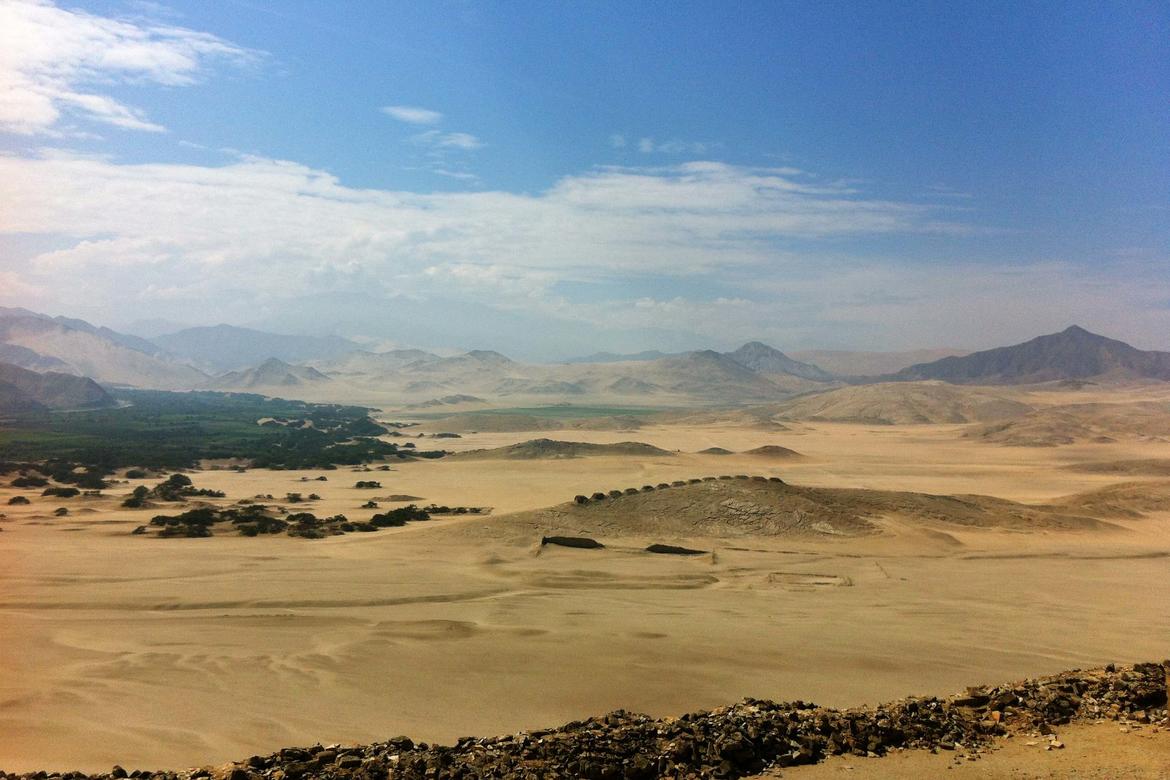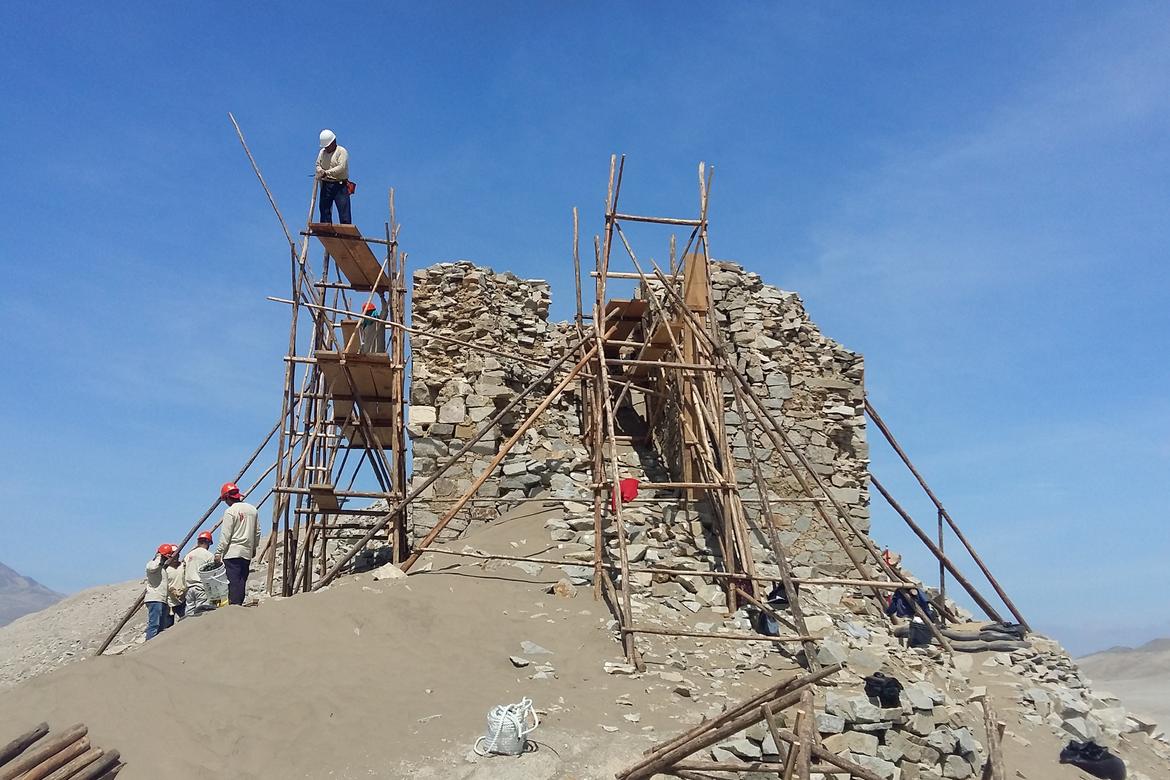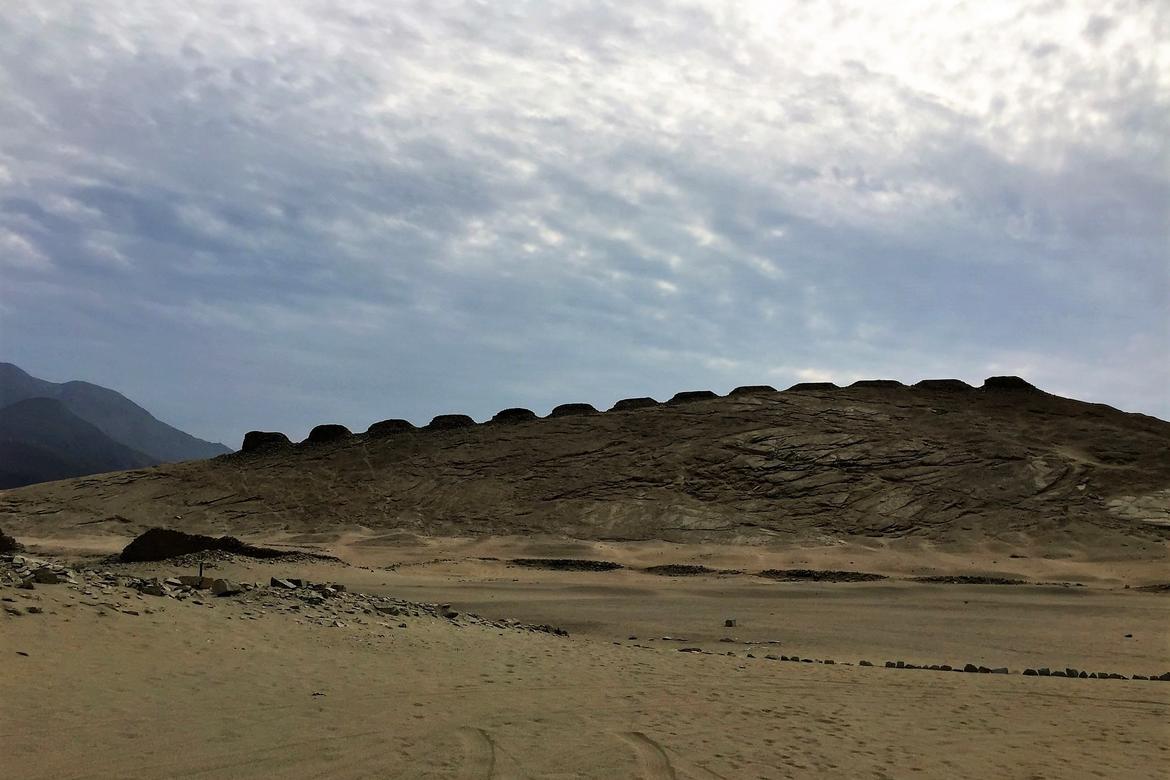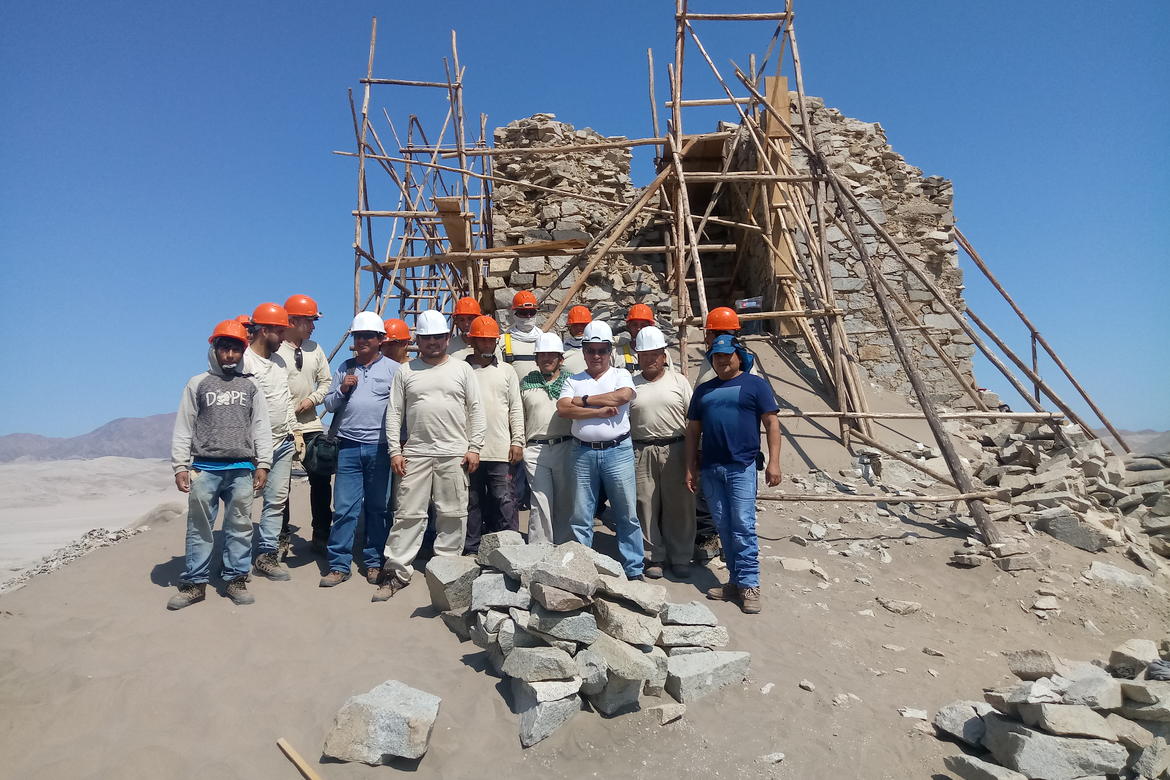A Major Milestone for America’s Oldest Astrological Observatory
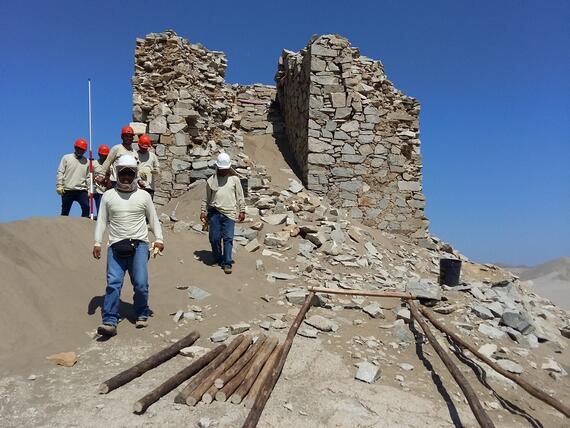
This week, our field project at Chankillo Archaeological Site reached an important milestone. On December 5, 2017, the District Municipality of Casma organized the public presentation of the conservation management plan (Plan de Manejo de la Zona Arqueológica Monumental de Chankillo). This is a small but crucial step in the process of nominating Chankillo to the UNESCO World Heritage List—a recognition of the outstanding cultural value of Chankillo that will result in greater investment in the stewardship of this inspiring place.
Chankillo, located in the coastal desert of Peru’s San Rafael District, was identified as an early astronomical observatory—possibly the earliest in the Americas, built from the mid-fourth century B.C. to the first century A.D.—in 2007. The thirteen towers located between two observation platforms allowed nearby inhabitants to determine the date with great accuracy by observing the sun’s trajectory.
World Monuments Fund has had a long history of work at Chankillo, beginning in 2010 when the site was included on the World Monuments Watch to call attention to the dilapidated conditions at the site. Since then, WMF has partnered with the Instituto de Investigaciones Arqueológicas (IDARQ), and the Ministry of Culture of Peru on a series of interventions, leading to its inclusion on Peru’s Tentative List for inscription on the World Heritage List.
Our latest involvement at the site began in early 2017 thanks to a grant from the U.S. Department of State’s Ambassadors Fund for Cultural Preservation and the Selz Foundation. For this latest phase of commitment, the work has focused on two distinct areas: restoration of the 13 stone towers, and the development of the conservation management plan mentioned above. For the past seven months, WMF consultants have been studying the physical, chemical, and mechanic compositions of the stones, mortars, adobe, water, lime, plaster, and pigments on the towers. The team has also trained 12 local residents in conservation techniques, helping build local capacity and technical expertise to care for the site over the long term.
There have been several challenges and exciting discoveries at Chankillo throughout the recent conservation initiative. Heavy downpours from El Niño in the early spring of 2017 caused significant flooding and landslides in northern Peru. Thankfully, no significant damage occurred at Chankillo. However, there was increased traffic in sensitive areas of the archaeological zone, as it became a conduit for residents nearby who were unable to access regular roads—a warning that the site needs greater protection in the future. This past summer, experts working on-site were able to analyze the timber beams used through the complex and identified 11 other El Niño occurrences going back 2,300 years! This discovery is both helpful to scientists studying climate more broadly and helpful to us in developing a management plan that addresses potential conditions at Chankillo.
We’re thrilled for Chankillo and residents of the surrounding areas that the site has taken one more step towards becoming a UNESCO World Heritage Site, and we are excited to be carrying out important fieldwork that will provide long-term conservation. Becoming a World Heritage site will have incredible economic and social benefits for the surrounding areas, boosting tourism development and providing added protection and recognition to this incredible heritage.
World Monuments Fund’s involvement at Chankillo was made possible through the commitment of our local partners, including IDARQ, the District Municipality of Casma, and Peru’s Ministry of Culture, as well as the many dedicated supporters who have championed this project through the years, including The Robert W. Wilson Charitable Trust, GRoW Annenberg, and Robert and Nellie Gipson.

